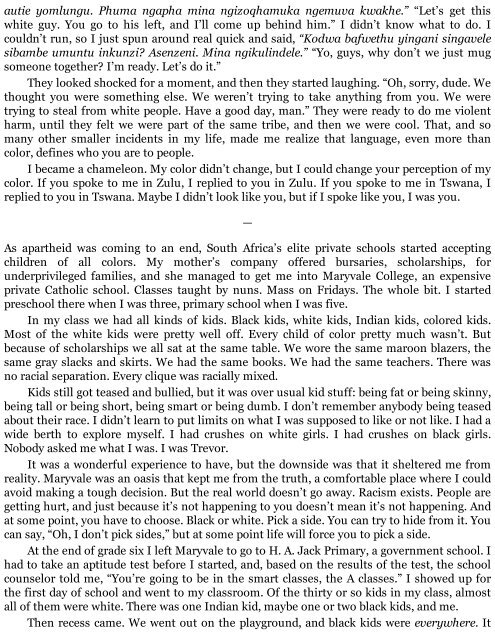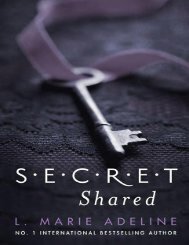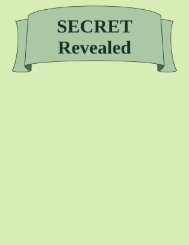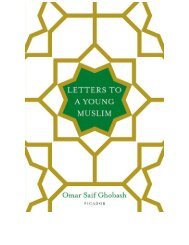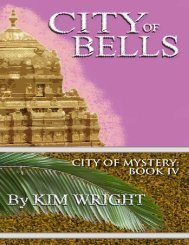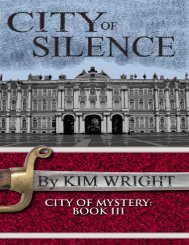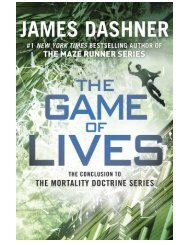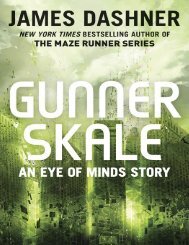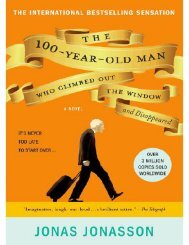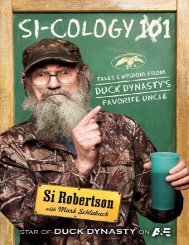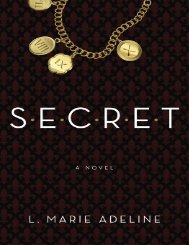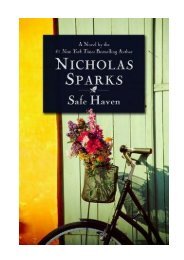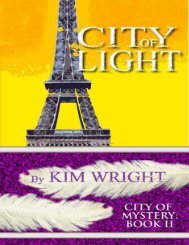Create successful ePaper yourself
Turn your PDF publications into a flip-book with our unique Google optimized e-Paper software.
autie yomlungu. Phuma ngapha mina ngizoqhamuka ngemuva kwakhe.” “Let’s get this<br />
white guy. You go to his left, and I’ll come up behind him.” I didn’t know what to do. I<br />
couldn’t run, so I just spun around real quick and said, “Kodwa bafwethu yingani singavele<br />
sibambe umuntu inkunzi? Asenzeni. Mina ngikulindele.” “Yo, guys, why don’t we just mug<br />
someone together? I’m ready. Let’s do it.”<br />
They looked shocked for a moment, and then they started laughing. “Oh, sorry, dude. We<br />
thought you were something else. We weren’t trying to take anything from you. We were<br />
trying to steal from white people. Have a good day, man.” They were ready to do me violent<br />
harm, until they felt we were part of the same tribe, and then we were cool. That, and so<br />
many other smaller incidents in my life, made me realize that language, even more than<br />
color, defines who you are to people.<br />
I became a chameleon. My color didn’t change, but I could change your perception of my<br />
color. If you spoke to me in Zulu, I replied to you in Zulu. If you spoke to me in Tswana, I<br />
replied to you in Tswana. Maybe I didn’t look like you, but if I spoke like you, I was you.<br />
—<br />
As apartheid was coming to an end, South Africa’s elite private schools started accepting<br />
children of all colors. My mother’s company offered bursaries, scholarships, for<br />
underprivileged families, and she managed to get me into Maryvale College, an expensive<br />
private Catholic school. Classes taught by nuns. Mass on Fridays. The whole bit. I started<br />
preschool there when I was three, primary school when I was five.<br />
In my class we had all kinds of kids. Black kids, white kids, Indian kids, colored kids.<br />
Most of the white kids were pretty well off. Every child of color pretty much wasn’t. But<br />
because of scholarships we all sat at the same table. We wore the same maroon blazers, the<br />
same gray slacks and skirts. We had the same books. We had the same teachers. There was<br />
no racial separation. Every clique was racially mixed.<br />
Kids still got teased and bullied, but it was over usual kid stuff: being fat or being skinny,<br />
being tall or being short, being smart or being dumb. I don’t remember anybody being teased<br />
about their race. I didn’t learn to put limits on what I was supposed to like or not like. I had a<br />
wide berth to explore myself. I had crushes on white girls. I had crushes on black girls.<br />
Nobody asked me what I was. I was Trevor.<br />
It was a wonderful experience to have, but the downside was that it sheltered me from<br />
reality. Maryvale was an oasis that kept me from the truth, a comfortable place where I could<br />
avoid making a tough decision. But the real world doesn’t go away. Racism exists. People are<br />
getting hurt, and just because it’s not happening to you doesn’t mean it’s not happening. And<br />
at some point, you have to choose. Black or white. Pick a side. You can try to hide from it. You<br />
can say, “Oh, I don’t pick sides,” but at some point life will force you to pick a side.<br />
At the end of grade six I left Maryvale to go to H. A. Jack Primary, a government school. I<br />
had to take an aptitude test before I started, and, based on the results of the test, the school<br />
counselor told me, “You’re going to be in the smart classes, the A classes.” I showed up for<br />
the first day of school and went to my classroom. Of the thirty or so kids in my class, almost<br />
all of them were white. There was one Indian kid, maybe one or two black kids, and me.<br />
Then recess came. We went out on the playground, and black kids were everywhere. It


